The Ottawa Senators were disappointed with their 2021-22 campaign. After finishing the 2020-21 season with a win percentage of 0.455 and three losses in their last 14 games, they ended this season with an even worse percentage of 0.445. Yes, part of that was due to multiple injuries and illnesses, including losing breakout star Drake Batherson for 36 games. But even at full health, they were nowhere close to general manager Pierre Dorion’s optimistic statements before the season. Rather than step into a new zone, they struggled to score goals, had little defensive pressure, and had little consistency in net.
While Dorion eventually recanted his claim that the Senators had finished their rebuild, it hasn’t changed his outlook that the team is nearly a playoff competitor. On May 25, Dorion sat down with TSN1200 to discuss recent developments. The conversation inevitably turned to the upcoming draft, and regarding their seventh-overall selection, Dorion said: “Maybe this is the year that we move pick seven to get an impact player that can help us right away. We’re not going to get a guy that’s a pending (unrestricted free agent) in a year’s time; I don’t think that would be really smart for us to do. But if we can get a guy that we know we will have some control over for more than a few years, that’s something we’d definitely look at.”
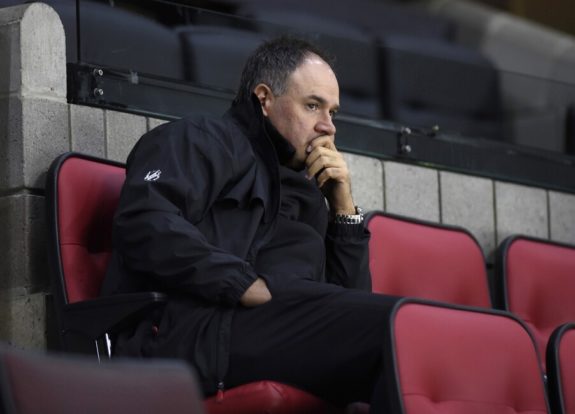
Although that is far from a definitive statement, it’s more than Dorion has said before regarding his team’s first-round pick, and fans rushed to Twitter and other social media to propose trade targets that would fit well with the team. However, trading the seventh-overall selection is the last thing the Senators should do. The value of the pick far outweighs the benefit of bringing in a player who can compete now. While the prospect of bringing in a top talent is tantalizing, Ottawa needs to stick to the plan and continue to build their team into a future competitor.
The Senators Will Have to Pay a High Price
At one time, the Senators had one of the best farm systems in the NHL. Batherson, Josh Norris, Tim Stützle, Alex Formenton, and Jake Sanderson headlined a deep group of highly-talented prospects, and while most of those players have since graduated to the NHL, there are several names that have yet to break into full-time roles.
Jacob Bernard-Docker and Lassi Thomson are on their way to becoming reliable defencemen, and Ridly Greig is developing into a dangerous power forward with a mean streak that will fit well with the franchise. Shane Pinto nearly graduated this year but was sidelined with a season-long injury, so he’ll look to grab a spot on the third line in 2022-23. Then there’s Sanderson, who also had some injury issues at the end of the season and will look to make his NHL debut in October.
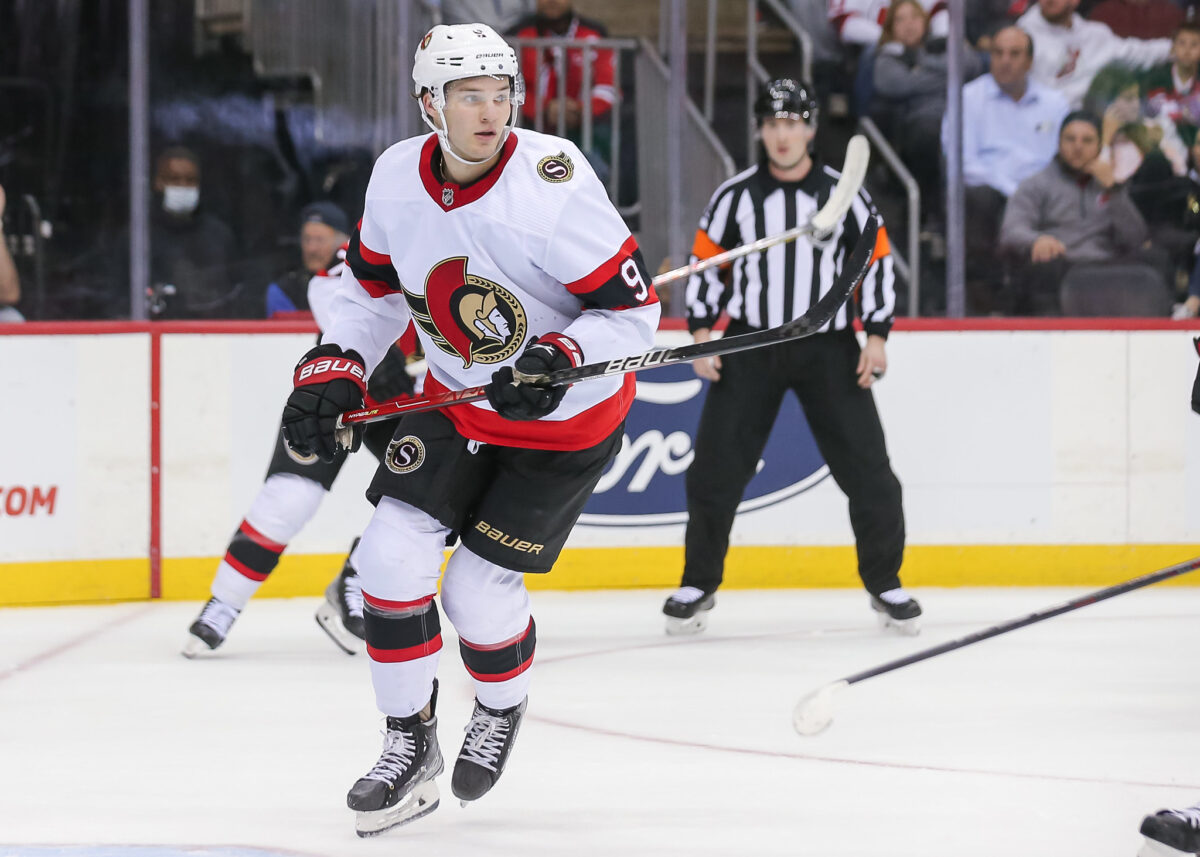
If the Senators want a player who they believe will have an immediate impact, then one of those players is gone. Most fans understand that it will cost talent to bring in talent, but the cost will almost certainly be higher than expected. Take a look at what the Boston Bruins paid for Hampus Lindholm: veteran defender John Moore, defensive prospect and former first-round pick Urho Vaakanainen, a first-round pick, and two second-round picks. For Ottawa, that would be one of Thomson or Bernard-Docker, as well as a veteran like Travis Hamonic or Nick Holden, plus every pick the Senators own in the first two rounds of the 2022 NHL Draft. If the target is instead a forward, then Greig or Pinto are likely packaged with a player like Austin Watson, plus draft picks.
Not only will the trade command a high price, but so will the player’s contract. Dorion mentioned that he wants a player who will be around for some time in order to develop alongside the core. The only problem is that teams rarely trade young stars with term. Those that are moved are usually looking for a big new contract, and that’s exactly the case with Kevin Fiala, who becomes a restricted free agent on July 1, and Alex DeBrincat, who has one more season before he needs a new deal. Clayton Keller, another potential trade target, is signed until 2027-28, but he also comes with a massive $7.15 million cap hit that he has yet to live up to and is the reason the Arizona Coyotes have looked into moving him.
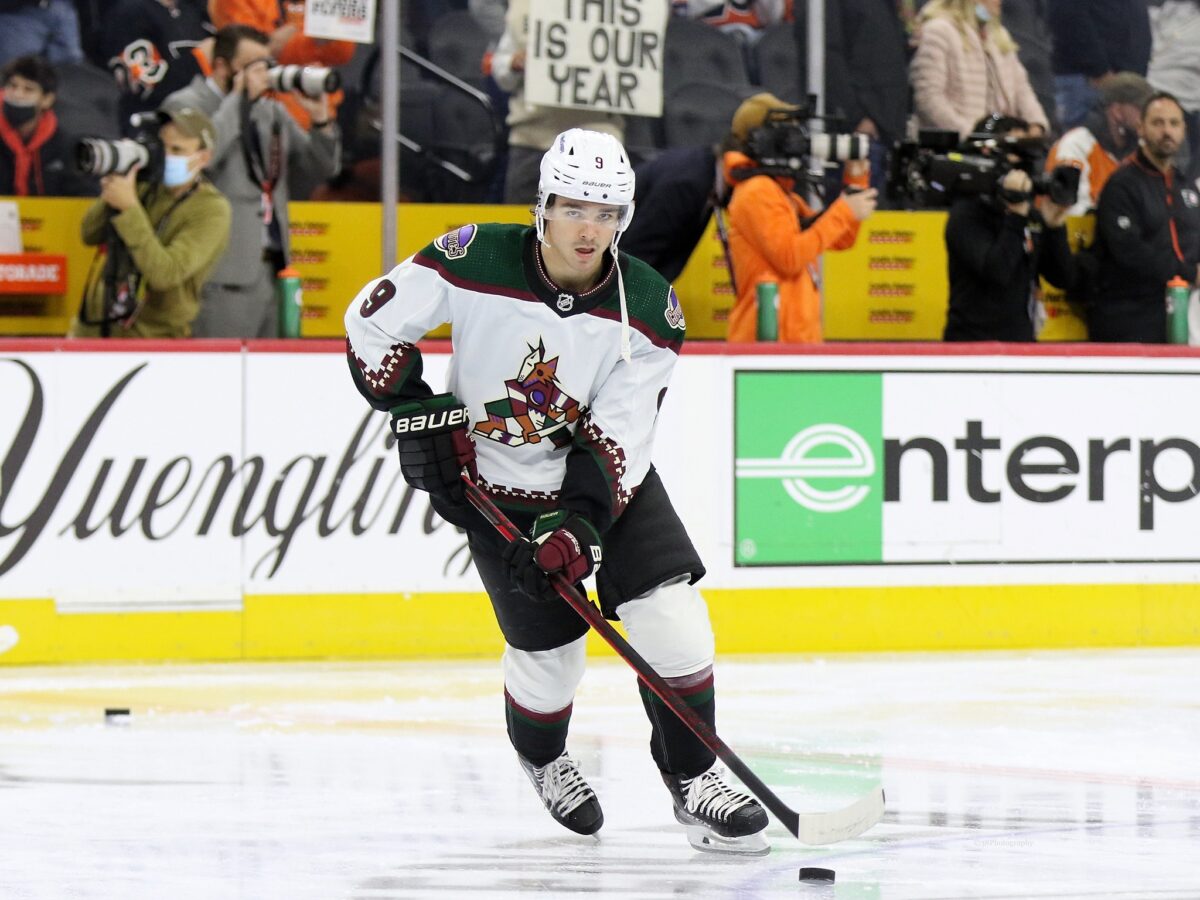
For a small-market team like the Senators, adding an expensive forward via trade may force out some of their younger stars when the time comes for them to sign new deals. Norris, Formenton, Erik Brannstrom, and Mathieu Joseph need new contracts this season, and Stützle will be looking for a big pay raise in 2022-23. Ottawa has roughly $24 million in cap space, and if the team prioritizes an extension for Norris, Stützle, and an impact player, then suddenly, there’s very little room left. That also doesn’t factor in what it will take to sign Sanderson in 2024-25. By simply adding one player, all those other core members’ futures become muddled.
The Senators Won’t Be in the Playoffs Next Season
The Senators’ rebuild stretches back to 2018-19 when the team traded Erik Karlsson to the San Jose Sharks. Since then, they haven’t seen a winning season, and it’s beginning to grate on players and fans. Everyone involved wants to see their efforts rewarded, and that will happen soon. The organization has stockpiled plenty of talent, many of whom are emerging into valuable NHL players. But they won’t see it in 2022-23.
The Hockey Writers’ Paul Quinney put it bluntly earlier this month when he noted that Senators’ management patted themselves on the back for achieving the bare minimum and then made excuses why other areas had not improved. Yes, the team’s young stars took a step forward in their development, but that was almost guaranteed, and yet the team still had the same struggles as the season before. Goaltender Matt Murray continued to struggle with health and consistency, the defence was porous even after adding Travis Hamonic and Micahel Del Zotto, and only three players registered more than 20 goals.
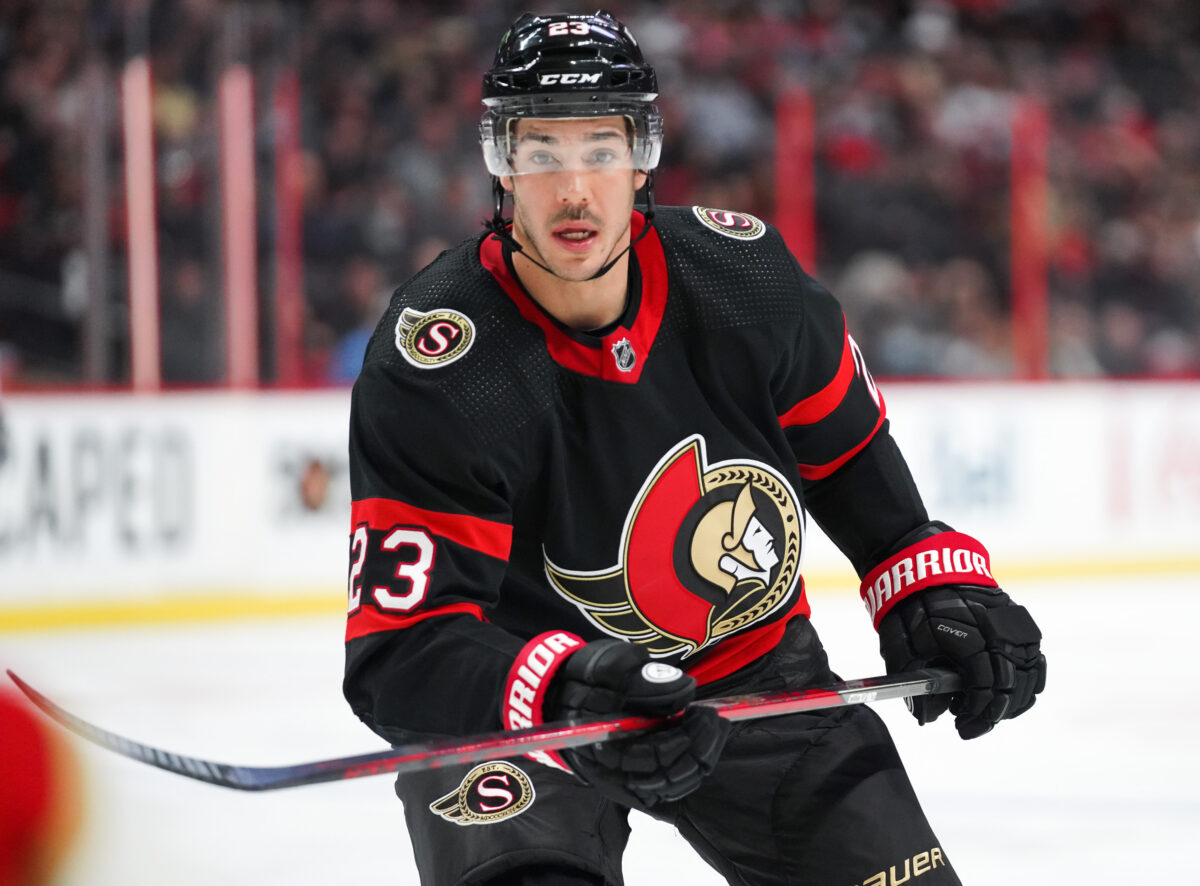
Being that many of the mock trades involve a forward, here’s a look at the Senators’ goal-scoring issues. This season, they ranked 26th with 227 goals and had only two 30-goal scorers on their roster. If they acquire someone like DeBrincat, who scored 41 goals for a weak Chicago Blackhawks team, and the team’s remaining roster scores the same number of goals as in 2021-22, Ottawa would shoot up to 12th in the league with 268 goals. That’s a huge improvement and likely a low ball for 2022-23 since their core should continue to improve. However, they also ranked 11th in goal differential with a dismal minus-39 and adding 41 goals only drops them down to 16th with a plus-2, not nearly good enough to be a playoff contender.
Making matters even worse is that they play in the Atlantic Division. To catch the lowest-seeded playoff team in their division – the Boston Bruins – the Senators would need to add 74 goals to their 2021-22 total. Even if the Bruins take a step back in 2022-23, Ottawa is nowhere close to catching them. That also doesn’t take into account the Buffalo Sabres or Detroit Red Wings, both of which scored more goals and finished with better records. There is a lot of work left to be done in Canada’s capital, and addressing one issue will not suddenly create a playoff team in a single season.
The Draft Pick Will Be Better
If the Senators decide to move their seventh-overall pick, they will be more or less at the mercy of the trade market. Fiala, DeBrincat, and Keller seem available, and Dallas Stars’ defenceman John Klingberg has also been rumoured to be on the move, as has Coyotes defender Jacob Chychrun. But, as mentioned above, teams rarely trade young players without good reason, and so far, none of those players has given their teams enough of a reason to aggressively seek a trade. This is far from the Jack Eichel situation. So, who could the Senators expect to be available with their selection?
Related: Senators 2022 Draft Targets – David Jiricek
Right now, the two best options are Jonathan Lekkerimäki and Joakim Kemell, both of whom project to be top-six scoring wingers. Kemell has a bit more physicality to his game, but a lot of Lekkerimäki’s style of play is reminiscent of John Peterka at the World Juniors alongside Stutzle. Other potential targets include the elite offensive center Matthew Savoie, the versatile Frank Nazar, and the big, physical defenceman David Jiricek. Left-winger Cutter Gauthier is also an intriguing option, and he’s shot up the draft charts in recent months thanks to his combination of skating, puck skills, and size.
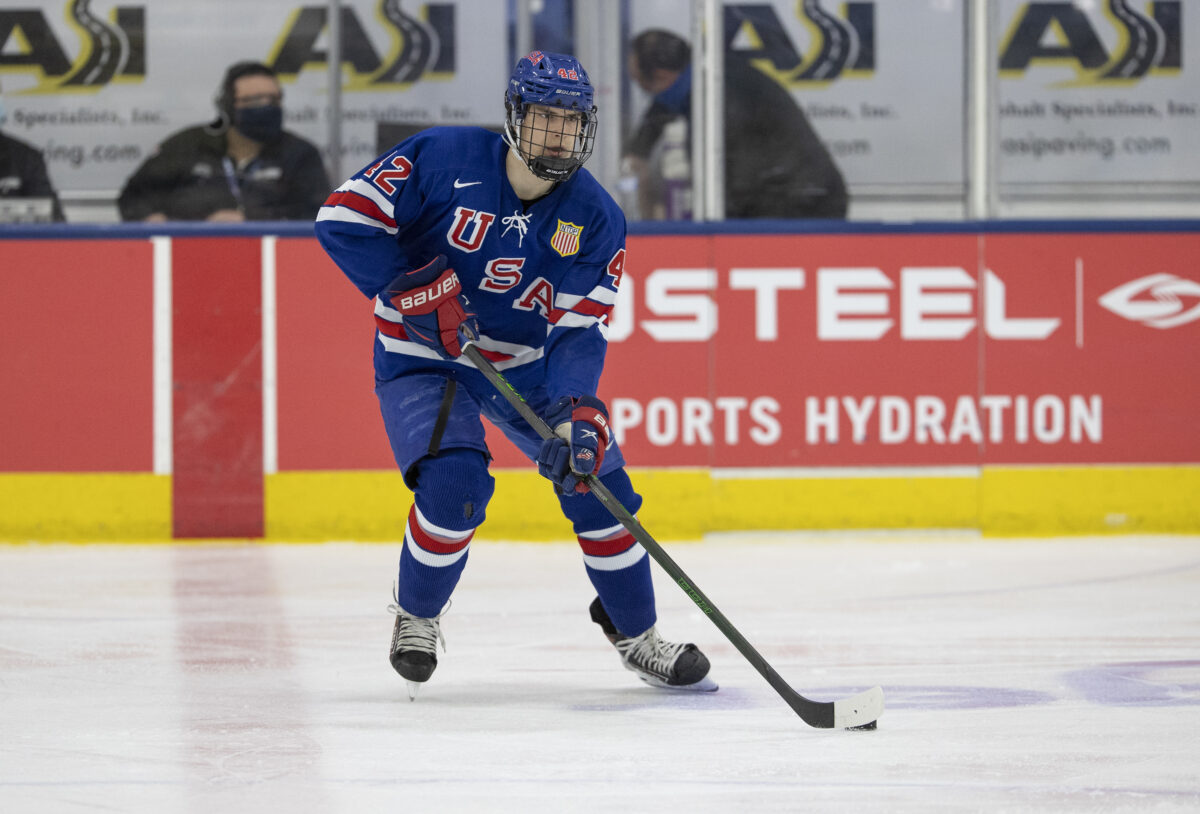
All those prospects project to be, at the very least, top-six players in the NHL. Is that not what the Senators are looking for? Yes, they’ll have to wait, likely two or three seasons, before they’ll be ready to contribute meaningfully to the team. But in the meantime, the Senators will have a chance to really put their farm system to the test. The defence, with Bernard-Docker, Sanderson, Thomson, and one of several other prospects, will certainly not be as weak. Nor will the forward corps, which will have Pinto, Greig, Angus Crookshank, Egor Sokolov, and others filling holes all over the lineup.
There is, of course, always a risk in drafting, and even if the Senators end up with a prospect projected to be a sure-fire NHLer, there’s no guarantee that he’ll make the team.
The Senators Have Bad Luck With Trades
As we all know, the Senators do not have a great record in acquiring ready-now players. In 2016, a 22-year-old, 20-goal scorer Mika Zibanejad was traded, along with a second-round pick, for 28-year-old Derrick Brassard, who had just one 60-point season under his belt. Brassard had two underwhelming seasons in Ottawa, while Zibanejad has become a true NHL star for the New York Rangers, including a 41-goal season in 2019-20. The trade is now seen as one of the worst in franchise history.
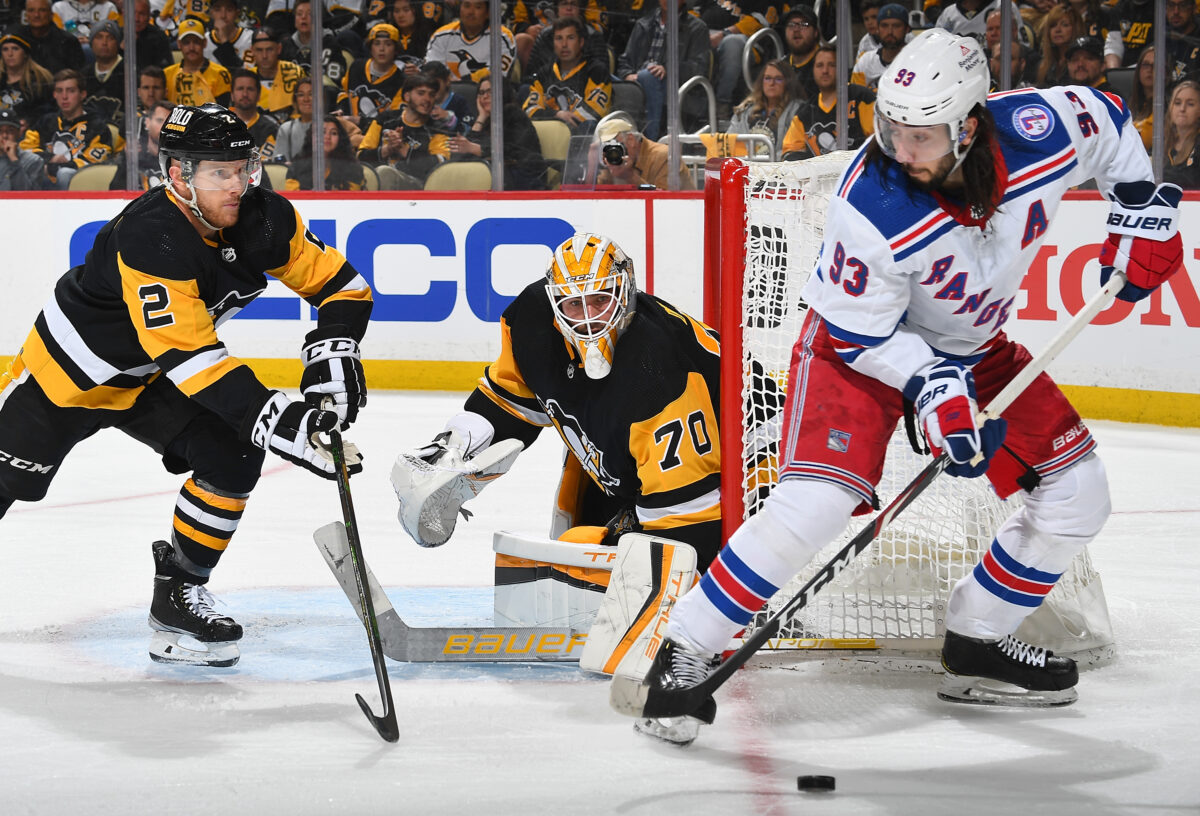
It’s sadly far from the only example. The Matt Duchene trade in 2017 nearly cost the Senators the first-overall pick, but they were saved by the lottery balls and only had to part with the fourth-overall pick, which the Colorado Avalanche used to select Bowen Byram. The season before, they traded prospect Jonathan Dahlen for Alexandre Burrows, who played all of 91 games with 25 points before retiring; Dahlen nearly hit that with the San Jose Sharks this season in 61 games.
Furthermore, old-fashioned blockbuster trades for established stars rarely lead to championships. Of the teams remaining in the 2022 NHL Playoffs, only the Rangers are led in scoring by a player they didn’t originally draft. While only 15 of the 25 top-5 scorers on each team are drafted, almost every single player was brought in before they hit their stride. Only Nazem Kadri was an established star when he was traded in 2019 to the Avalanche, and it took three seasons before he exploded with 87 points.
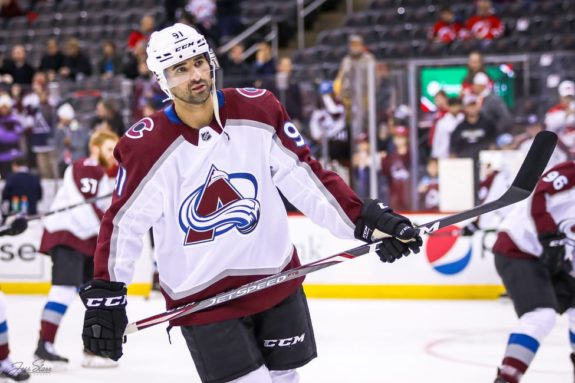
The same can be said for top-four defencemen, although 65% of them were acquired through trade. Adam Fox, Mikhail Sergachev, Devon Toews, and Brady Skjei all were traded early in their careers and only emerged as top defenders with their new teams. Jacob Trouba and Ryan McDonagh are the exceptions to this group, having established themselves as top-four blueliners before being moved.
So, while many franchises use trades to help build their rosters, dealing for established stars seems to be rare among the league’s best teams. Rather, they look for undiscovered talent that can be acquired cheaply, then wait for them to break out. The Senators have done this in the past – just look at Anthony Duclair’s time in Ottawa, but instead of bringing him into the core, they sent him away for more prospects. Management misidentified talent and cut ties before they could fully realize their abilities, which likely extended their rebuild longer than it had to be.
Drafting is Still the Best Path to Success
Right now, the Senators are in the late stages of their rebuild and are itching for it to end already. But these steps are the most crucial parts of creating a championship team. If they decide to rush through it and acquire a player like DeBrincat, Keller, or another young star, they may be costing their team a shot at a Stanley Cup.
As hard as it may be, Ottawa needs to be patient and continue to use their draft picks to accumulate high-end prospects who can give their team a massive boost in the future. Then, while they wait for their top prospects to develop, they can tinker with the rest of the roster, adding wily veterans and undiscovered stars. This is how nearly every championship team created their roster, and if the Senators want to follow in their footsteps, they need to keep their first-round pick.